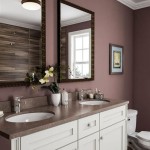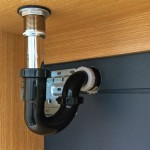Bathroom Sink No Overflow Drain: Key Considerations
When selecting a bathroom sink, one critical aspect to consider is the presence or absence of an overflow drain. This small hole, typically located near the rim of the sink, serves as a safety measure to prevent water from overflowing and potentially causing damage to your bathroom and belongings.
Benefits of a Bathroom Sink No Overflow Drain
An overflow-free sink offers several advantages:
- Improved Aesthetics: The lack of an overflow drain creates a cleaner and more seamless look, enhancing the overall aesthetic appeal of your bathroom.
- Easier Cleaning: Overflow drains can be difficult to clean, as dirt and debris can accumulate around the opening. Eliminating this feature simplifies maintenance.
- Reduced Risk of Water Damage: With no overflow drain, there is less risk of water spilling over the sides of the sink and damaging floors, cabinets, and other fixtures.
Drawbacks of a Bathroom Sink No Overflow Drain
Despite its advantages, a sink with no overflow drain also has some drawbacks:
- Increased Risk of Overflow: Without an overflow drain, the sink can overflow more easily if the water flow is excessive or the drain is blocked.
- Limited Water Flow: The absence of an overflow drain may limit the maximum water flow rate, which can be inconvenient if you prefer powerful water pressure.
Choosing the Right Sink for Your Needs
The best choice for you will depend on your specific bathroom layout, usage habits, and aesthetic preferences:
- Overflow-free sinks are ideal for small or minimalist bathrooms where space is limited. They also suit those seeking a sleek and modern look.
- Sinks with overflow drains provide peace of mind by preventing overflows, making them a good option for families with young children or those who prefer a more traditional appearance.
Additional Considerations
In addition to the presence or absence of an overflow drain, there are other factors to consider when choosing a bathroom sink:
- Drain Opening Size: Ensure the drain opening is compatible with your plumbing system.
- Sink Material: Common materials include porcelain, ceramic, stainless steel, and glass, each with its advantages and disadvantages.
- Basin Depth: The depth of the basin affects water retention and the amount of splashing.
By carefully considering these factors, you can select the perfect bathroom sink to meet your aesthetic, functional, and safety needs.

Zeek Dc150 Chrome Pop Up Drain With Overflow

Bathroom Sink Without Overflow In Spot Free Stainless Steel Kraus

Pf Waterworks Clogfree Sink Lavatory Pop Up Drain Magnetic Stopper Gray Abs No Overflow Brushed Nickel Pf0324 Bn Gr Com

Pf Waterworks Clogfree Never Clog Pop Up Drain Magnetic Stopper Transpa Abs W Overflow 1 6 2 Sink Hole Brushed Nickel Pf0324 Bn Tr The Home Depot

Vessel Sink Pop Up Drain Without Overflow Brushed Nickel

Sink Drain No Overflow Accessories Bristol Sinks

Sereve Valley Bathroom Sink Pop Up Drain Brass Material With Mounting Serene

Lavatory Co Plug Grid Drain With No Overflow Dea Bathroom Machineries

Deervalley Dv 1d801 Bathroom Sink Drain Pop Up With Porcelain Ceramic Top Cap For Without Overflow Gloss White Com

Bathroom Sink Pop Up Drain No Overflow Brushed Nickel Finish By Stylish Vanity
Related Posts







